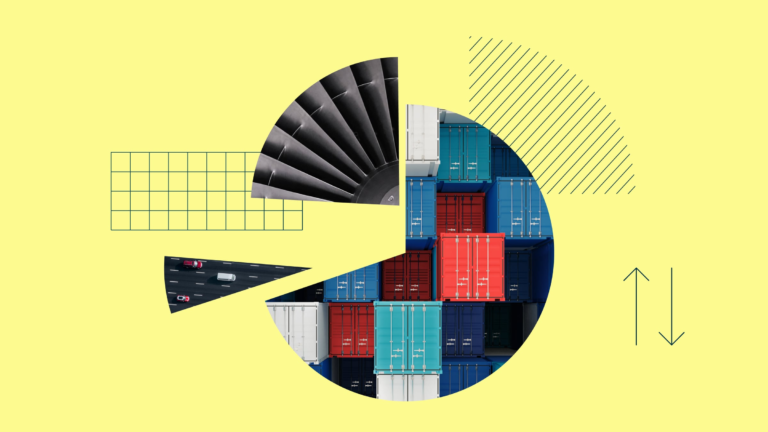Key Takeaways
Stocks have churned higher despite a lack of progress on tariff deals.With valuations elevated, analysts say the market may be too complacent about trade policy.Strong second-quarter earnings and secular trends like AI may help stocks keep climbing.
Every day brings new twists and turns in the saga around President Donald Trump’s tariffs, but stocks are taking it all in stride. Gone are the massive swings investors endured in April, when stocks whipsawed on every new development (whether it was factual or mere rumor) in US trade policy.
Analysts say tariffs could exacerbate inflationary pressures and reduce consumer demand, which would slow economic growth both in the United States and around the world. Higher tariffs on imported goods mean higher costs for many US firms, which could hurt profit margins and weigh on corporate earnings, as well as the overall stock market’s performance.
Dominic Pappalardo, chief multi-asset strategist for Morningstar Wealth, chalks the seeming lack of concern to widespread “headline fatigue.” He points out that the phenomenon extends beyond tariffs, with stocks quickly shaking off this week’s report that Trump was close to firing Federal Reserve Chair Jerome Powell.
Tariffs, TACO, and Market Tremors
For most of 2025, investors have struggled to come to terms with the massive uncertainty the Trump administration has injected into the global economy. Recession odds in the US have risen and fallen, along with the outlook for global growth, inflation, and projected returns for the equity market.
One reason for investors’ seemingly sanguine attitude has been summed up by the TACO trade (a tongue-in-cheek acronym for “Trump always chickens out”). This is the trend wherein markets would respond sharply as the president threatened aggressive tariffs, only to recover after he walked back or delayed those measures.
What Tariffs Could Mean for Fixed-Income Investors
June CPI Report: Tariffs Are Finally Hitting US Consumers’ Wallets

That pattern has fallen apart over the last few weeks, with new tariff headlines causing barely any ripples. For much of this summer, investors have looked past the worst-case scenario, even if the new reduced rates floated by the White House are significantly higher than historical standards.
The Morningstar US Market Index has returned 7.7% so far this year, despite the threat of higher tariffs that looms later this summer and the passing of a July 9 dealmaking deadline. The market is up more than 27% since bottoming out in April.
How much bad news can markets handle? Analysts say stocks’ relentless march higher may be masking vulnerabilities.
What’s Happening With Tariffs?
So far, the US has inked a trade deal with the United Kingdom and announced deals with Vietnam and Indonesia, though details remain limited. Ahead of a new Aug. 1 deadline to settle matters with other major trading partners, the Trump administration is ramping up the pressure. It has begun sending letters to Brazil, Canada, Mexico, Japan, the European Union, and others, threatening a new tariff rate if a deal is not reached.
Some of those letters carry rates in excess of 30%. Many are lower than the rates Trump announced in early April, but some are in line or even higher. Trump has also floated setting a 10% or 15% rate that would cover more than 150 countries.
Even if Trump pulls back on the most extreme tariffs, the taxes will be significantly higher than they were last year. “The current average tariff rate is still the highest since the 1930s,” Morningstar chief US economist Preston Caldwell recently explained. He expects tariffs to average 11.5% between 2025 and 2029. In 2024, the average US tariff rate was 2.4%.
Even if the market hasn’t treated it as such, the White House’s tougher stance has been a surprise, according to John Belton, a portfolio manager at Gabelli Funds focused on growth strategies. “Rhetoric from the president and the administration over the last couple weeks has been quite a bit more hawkish on tariffs than expected,” he says. “I’m viewing most of the recent news flow as incrementally concerning versus expectations.”
An ‘Increasingly Fragile’ Market Expects Deals
For Scott Clemons, chief investment strategist at Brown Brothers Harriman, the market’s steady upward climb signals dangerous complacency. While the Trump administration has proved willing to walk back tariff announcements thus far, there’s no guarantee it will continue to do so. “At some point, the White House is going to say, ‘We told you that Aug. 1 was the deadline, and now it’s Aug. 1, and so you all get tariffs again and that’s that,’” he says.
The rally slowed some this week, with stocks roughly flat since Monday. Gabelli’s Belton says that’s evidence of “an increasingly fragile market.”
Stocks Look More Expensive
Stretched valuations are compounding tariff-related risks. The US stock market is now trading at a roughly 2% premium to Morningstar analysts’ estimate of its fair value.
“At the current premium, the market is not providing any margin of safety in order to provide a downside cushion if tariff negotiations go awry or earnings guidance for the third quarter disappoints investors,” Morningstar chief US strategist Dave Sekera wrote in his third-quarter outlook.
“I think the biggest risk is that we realize tariffs are at least temporarily causing inflation and demand destruction, and then you have this narrative of stagflation and recession reenter the picture against the backdrop of a fully priced stock market,” adds Belton.
Earnings Season and Tax Bill Could Boost Stocks
Separate from trade developments, there are tailwinds pushing stocks higher. “The market’s not solely trading on tariff headlines anymore, which is healthy,” Belton says.
In the near term, the second-quarter earnings season will be the focus. Analysts will be watching closely for details on how much tariff costs companies plan to absorb versus how much they plan to pass on to consumers. Earnings growth is expected to slow this year as tariffs weigh on balance sheets, but many analysts remain optimistic about fundamentals over the long term.
Q2 Earnings Season Preview: Will Tariffs Begin to Bite?

Earlier this month, strategists from Goldman Sachs raised their valuation and return forecasts for the S&P 500 index, partially based on “investors’ willingness to look through likely near-term earnings weakness.”
Brown Brothers Harriman’s Clemons says some investors may see the new tax bill recently passed by Congress as supportive for stocks. He points to business-friendly provisions, such as the restoration of 100% bonus depreciation for certain investments. That’s good for earnings even if tariffs prove a drag.
That’s not to mention ongoing secular trends, like artificial intelligence. Gabelli’s Belton points to recent news that semiconductor giant Nvidia NVDA will resume selling chips in China that were previously blocked by export controls. That sent the company’s stock sharply higher, and it’s a sign that the AI tailwind remains strong.
